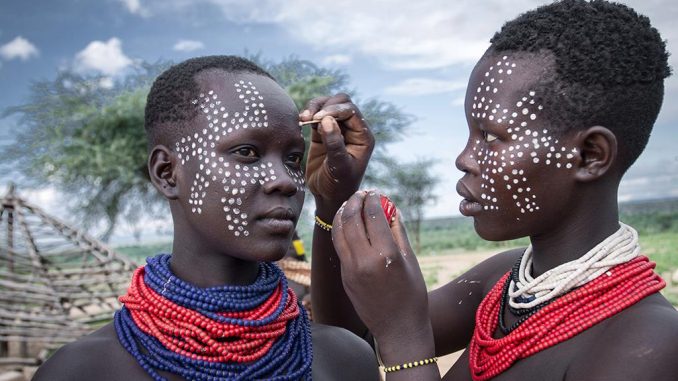
Ethnic Karo girl from Ethiopia`s Omo River Valley designing her sisters face with white clay to enable them take part in the village`s festive occasion. The Karo, also known as Kara are a small tribe with an estimated population between 1,000 and 3,000. They are closely related to the Kwegu tribe. They live along the east banks of the Omo River in southern Ethiopia.
They are surrounded by relatively wealthy and strong groups, in terms of cattle and population size. Karo, whose neighbors especially the Hamar (to the South East ) ,Bana (to the east ),Bashada (to the East ), the Mursi (to the North)and Nyangatom (to the west across the Omo river ) know them by the name Kara, speak a south Omotic language.
The main subsistence crops of the Karo are sorghum ,maize and beans .They are also supplemented by bee-keeping and more recently fishing. They plant fields using rain, flood retreat and river bank cultivation but the most important source of grain production is river bank farming than the other two which is carried out both along omo river and on the shores of Lake Diba.
The Karo used to have big ,magnificent houses when they were rich in cattle but after they have lost their wealth through tsese fly they adopted the much lighter conical huts of the Bume. Every karo family own two houses-the conical shaped Ono which is the principal living room of the family and the flat roofed Gappa which is the center of several house hold activities.
The Karo have Muldas- kind of gate having “Y” shaped wooden posts up on which are placed horizontal wooden pars. There are -Dus,Korcho and Labuk.
The most striking thing about Karo people’s symbolic and ornamental expressions is the painted body and face decorations.
BY: Kweku Darko Ankrah
